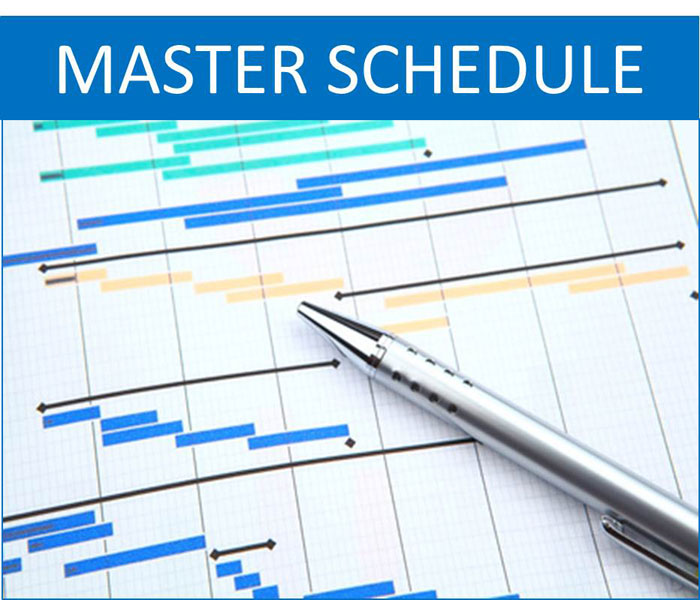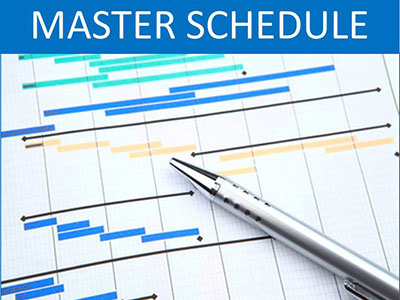 A master schedule is an integral part of your production plan and communications to your team to centralize focus.
A master schedule is an integral part of your production plan and communications to your team to centralize focus.
I have yet to work with a client who couldn’t use improvement in their master planning process. Whether a company is squarely on the lean journey, traditional MRP or a combination of both, master scheduling can add value. In essence, a master schedule is a long-term plan which allows you to plan capacity, staffing, etc. Thus, I thought a few strategies for success can be a good idea:
• Think Long-term: to be effective, you need a long-term view.Thus, look out at the long-term. If you do not have sales orders in your system for 12-24 months, you should look at putting together a demand plan for your repetitive items. Don’t worry about sporadic items except for saving x% of capacity.
• Inventory strategy: Build inventory strategy into your plan. Are there customer commitments for inventory? Do you have a sales & operations plan driving your inventory goals? Do you plan to increase or decrease inventory?
• Apply level loading techniques: Since you have a long-term view of requirements, it provides an opportunity to smooth out production. Take advantage of it!
• Consider lot sizes: Incorporate lot sizing logic for anything noteworthy.Think about economic order quantities.
• Coordinate: A master schedule is useless if not communicated and coordinated with manufacturing, scheduling, purchasing, customer service, etc.



